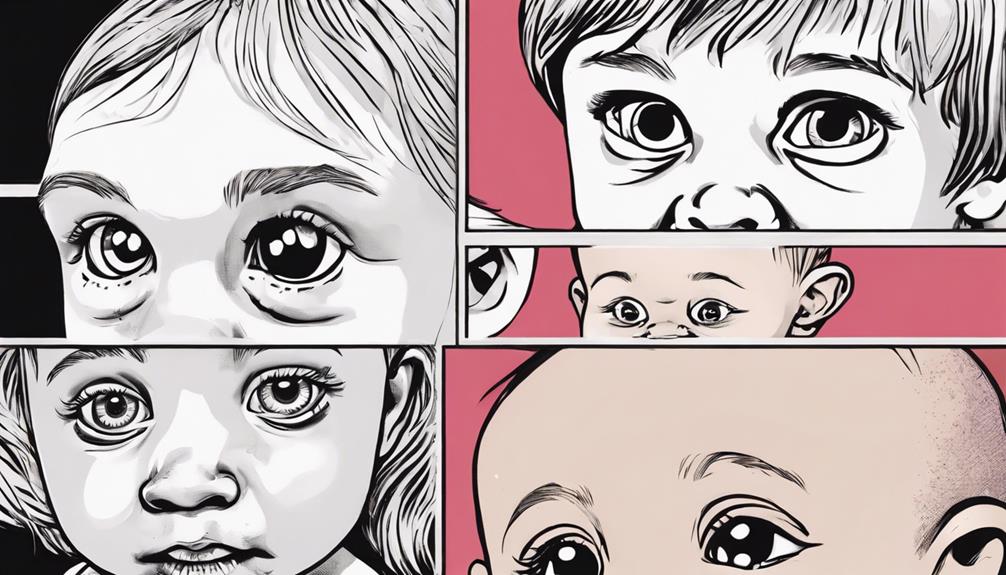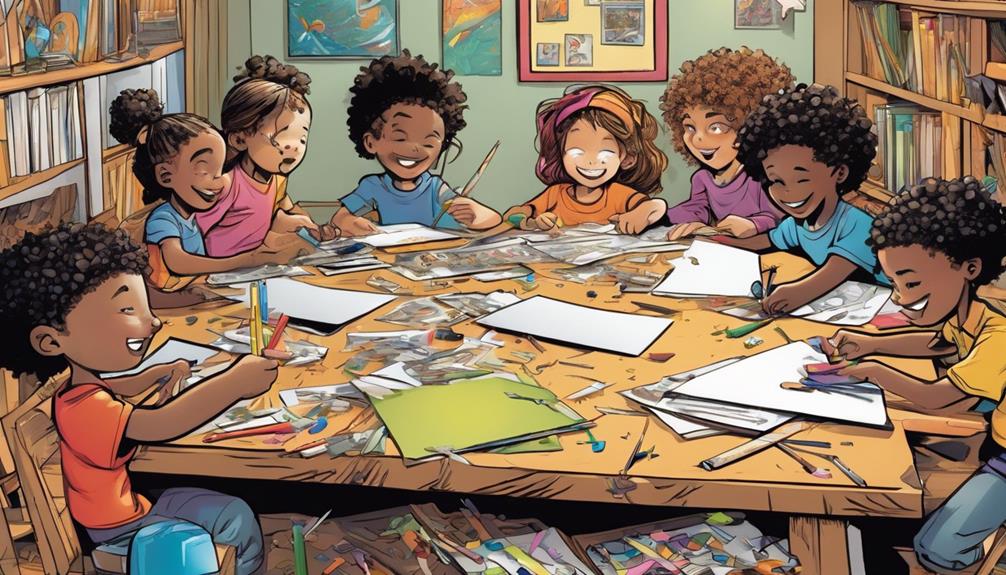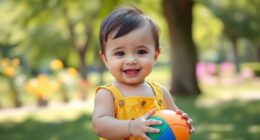Scientific research shows that babies inherit a combination of traits from both parents, influencing their physical appearance. Genetics, the prenatal environment, and chance are all important factors in determining which parent a baby resembles more. Parents often bond emotionally with their babies by noticing similarities in physical features, either with themselves or their partners. Fathers may spend more time with children who bear a resemblance to them, which can affect parental involvement and the health of the child. The resemblance between parents and children plays a crucial role in the dynamics of the parent-child relationship. Understanding these factors helps to illuminate the complexities of baby resemblance and its wider implications.
Key Takeaways
- Babies resemble both parents due to genetic variations.
- Environmental factors during pregnancy influence baby's likeness.
- Cultural norms and societal influences impact perception of resemblance.
- Emotional connection and bonding influence parental perception.
- Resemblance to fathers can lead to increased paternal involvement.
Scientific Studies on Baby Resemblance
Scientific studies have investigated the phenomenon of baby resemblance to determine the extent to which infants reflect features of their parents. Research from a famous 1995 study suggested that babies look more like their fathers, but recent studies indicate that infants typically exhibit a combination of both parental traits.
Mothers often identify paternal similarities in their babies, possibly due to subconscious biases. However, the evidence on babies looking more like their fathers remains inconclusive. Factors such as genetic variations, prenatal environment, and random chance play significant roles in determining a baby's likeness to their parents.
Despite ongoing research, the complexity of genetic inheritance and the interplay of various factors continue to challenge the definitive understanding of why babies resemble certain family members more than others.
Factors Influencing Baby's Likeness

Studies exploring baby resemblance have highlighted various factors that influence a baby's likeness to their parents. Genetics play a significant role in determining a baby's features, with traits passed down from both the mother and father contributing to the baby's appearance.
Additionally, environmental factors during pregnancy can also influence how a baby looks, such as the mother's diet, lifestyle choices, and exposure to external elements. The timing of physical development in the womb can further impact a baby's likeness to their parents.
Moreover, cultural influences and societal norms may affect how parents perceive their baby's resemblance to them. Overall, a combination of genetic, environmental, and cultural factors contributes to the complex process of determining a baby's likeness to their parents.
Parental Perceptions of Baby's Features

Perceptions of a baby's features by parents play a significant role in shaping their emotional connection and bonding with their child. When parents observe their baby's physical characteristics, it can influence how they relate to and care for their little one.
Here are some key aspects of parental perceptions of a baby's features:
- Parents may notice similarities to themselves or their partner
- Some parents focus on unique traits that make their baby stand out
- Parents often compare the baby's features to those of family members
- Cultural beliefs and traditions can also impact how parents perceive their baby's appearance
Paternal Influence on Baby's Looks

Parental observations of a baby's physical features often extend to contemplating the potential influence of the father on the baby's looks. While a famous 1995 study suggested that babies tend to resemble their fathers more, recent research indicates that babies typically exhibit a mix of both parents' features.
Mothers, in particular, may unconsciously seek out similarities between their babies and the father. Fathers, on the other hand, are found to spend more time with children who bear a resemblance to them, investing more emotional and material resources in these look-a-like children.
This emotional connection often leads to fathers feeling closer to babies who share their features, resulting in decreased anxiety levels. However, conclusive evidence on babies primarily looking like their fathers remains elusive.
Implications of Baby's Resemblance

The resemblance between babies and their fathers can have significant implications on various aspects of the parent-child relationship and child development. Studies have shown that fathers who see a resemblance between themselves and their children tend to spend more time with them, invest more emotional and material resources, and feel emotionally closer.
Children who are perceived to look like their fathers also tend to enjoy better health outcomes. On the other hand, mothers may subconsciously point out paternal features in babies, contributing to the bond between father and child.
While the evidence on babies looking more like their fathers is inconclusive, the perceived resemblance can play a role in shaping the dynamics of the parent-child relationship.
Frequently Asked Questions
Can Babies Look Like Grandparents Instead of Parents?
Yes, babies can resemble grandparents instead of parents. Genetic traits can skip generations, leading to babies looking more like their grandparents. This phenomenon showcases the complexity of genetics and the unique mix of traits passed down through family lines.
Do Twins Typically Resemble Each Other More Than Siblings?
In the intricate tapestry of genetics, twins often mirror each other's features more distinctly than siblings. This phenomenon, a symphony of shared DNA orchestrating similar physical traits, manifests a unique bond between twins.
Are There Any Genetic Factors That Influence Baby Resemblance?
Genetic factors play a significant role in influencing baby resemblance. Various genes inherited from both parents contribute to a unique blend of features in babies. Factors such as dominant and recessive traits determine the physical characteristics a baby may exhibit.
Can a Baby's Resemblance Change as They Grow Older?
As babies grow, their resemblance can shift due to various factors like aging and developmental changes. Genetic influences may become more pronounced, but environmental factors, interactions, and personal traits can also alter perceived resemblance over time.
Do Adopted Babies Tend to Resemble Their Adoptive Parents?
Adopted babies may exhibit physical and behavioral resemblances to their adoptive parents over time. While genetics play a role in appearance, environmental factors and bonding can influence similarities. Research suggests a blend of nature and nurture in resemblance.
Conclusion
In summary, babies likely inherit traits from both parents, resulting in a unique blend of features.
While some studies suggest babies may bear a resemblance to their fathers, the reality is more complex. Factors such as genetics, environment, and chance play a role in determining a baby's likeness to their parents.
For example, a baby may have their mother's eyes and their father's smile, showcasing the intricate interplay of genetic inheritance in determining physical characteristics.










